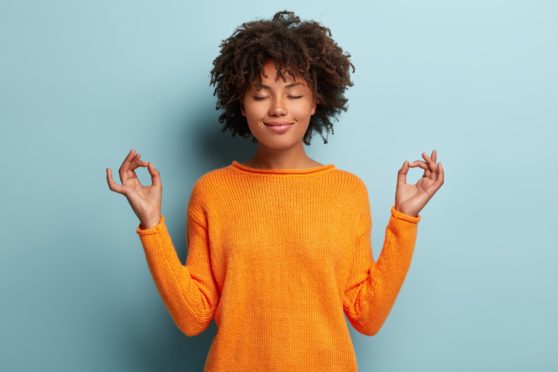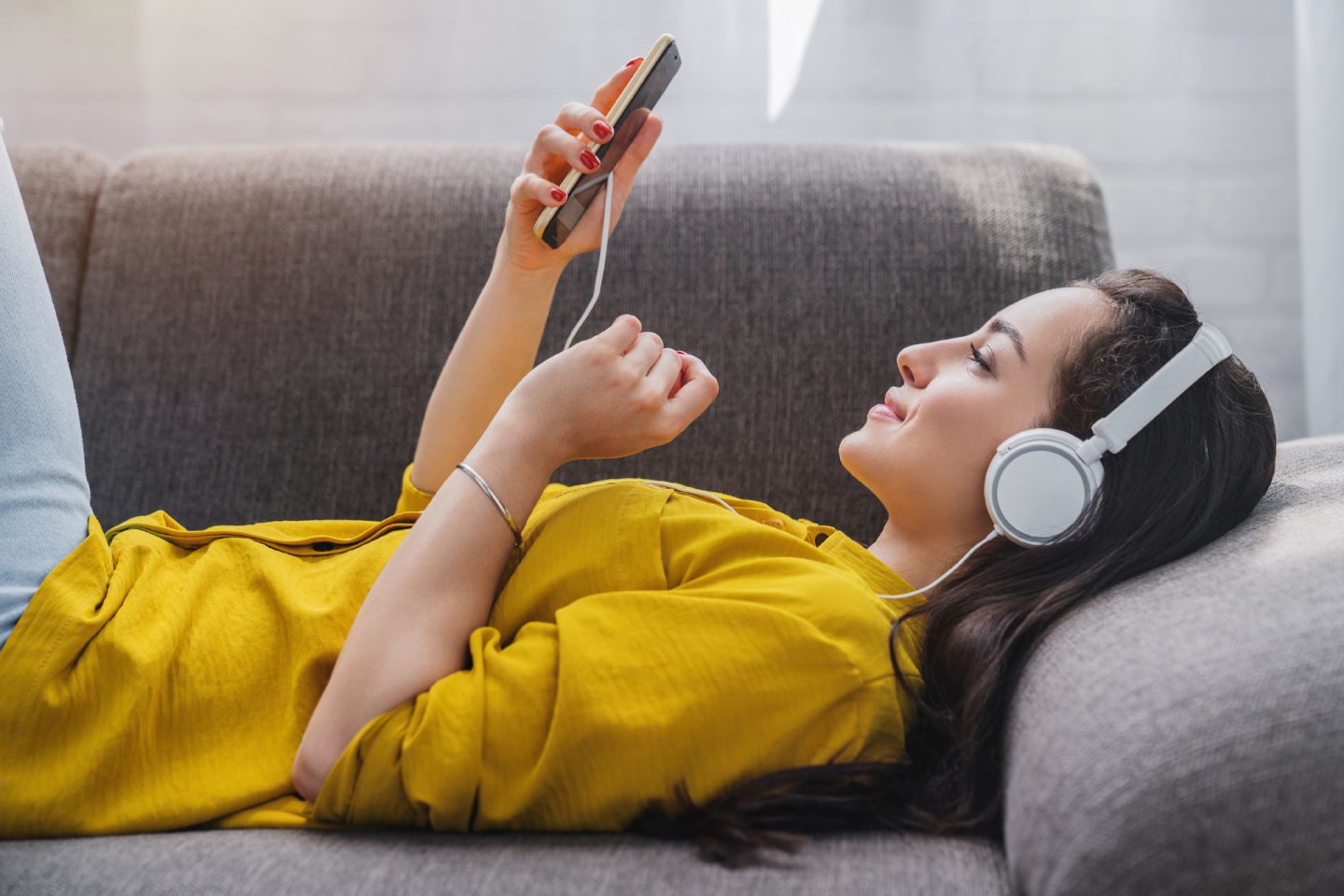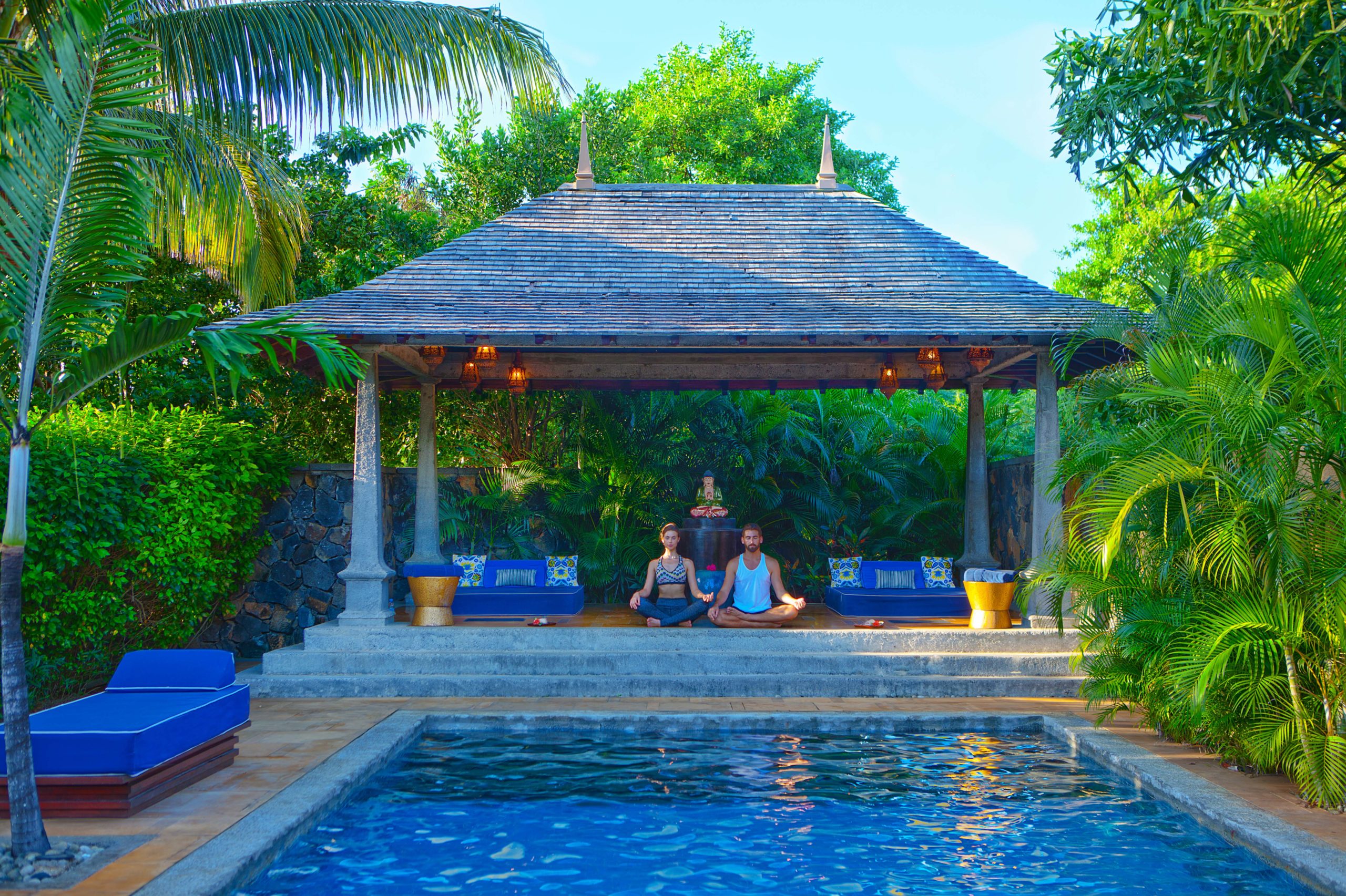
It is as easy as breathing, apparently, but experts have told how meditation is helping the world cope with the stress of lockdown.
The pandemic has promped a huge surge in interest in the holistic Eastern practice most associated with Buddhism and hippies searching for Enlightenment.
But the calming mindfulness is, it turns out, exactly what we need to keep an even keel during the stress and strain of Covid and is fast becoming as mainstream as yoga, backed by celebrities such as Russell Brand and Fearne Cotton, and now even prescribed by the NHS for stress and anxiety.
Described by meditation practitioner Ken Jamieson as a “mental break from your worries and stresses,” meditation puts the focus on something else so our minds have no space to think about the grind and churn of everyday life.
And in the past 10 months – a time where we have been unable to escape waves of bad news – meditation has been a mental escape for millions of people worldwide. Since the start of the coronavirus crisis, meditation app Headspace’s courses have had a 1,000% spike in users.
In the UK alone, 10 times more people are following Headspace’s Reframing Anxiety At Home course, and it now has 65 million users worldwide. Now the app is on TV with Netflix streaming Headspace Guide To Meditation, fronted by co-founder Andy Puddicombe, bringing a whole new concept to the phrase “Netflix and chill”.
Scottish meditation organisations like Glasgow Transcendental Meditation have also seen an increase in their online service users throughout lockdown and Glasgow Meditation has launched its very own app, MindGem.
So what exactly is meditation, and how can it help us? “Meditation is simply about training the mind to become more aware of the present moment in order to gain perspective,” explained Ken Jamieson. “It’s not about trying to turn off your thoughts or feelings, but being able to recognise them for what they are – just thoughts and feelings.
“It works for stress and anxiety by calming the mind enough to deal better with worry or anything that is overwhelming us, and being present fully in the current moment.”
With origins in Buddhism going back around 2,600 years, meditation has long been thought of as a religious practice, similar to prayer. Although stemming from a religious faction and related to spirituality and enlightenment, its impact on our physicality has now also been proven.
Scientific studies have shown regular and sustained meditation alters the brain’s physical make-up, and medical professionals now take it far more seriously as a treatment. “Meditation can decrease respiratory rate, decreases heart rate, decreases blood pressure, and decreases muscle tension,” said former nurse Angela Landers, director of Glasgow Transcendental Meditation.
“Having taught transcendental meditation for 20 years, I find that people no longer need to be convinced of meditation’s practical benefits. Meditation is now more mainstream. It is being taught in schools and businesses and prescribed by doctors as well as being popularised by lots of celebrities. People are now meditation shopping and often want to know the difference between different types of meditations for different problems.”
As well as helping improve mental wellbeing, meditation can also be used to alleviate physical maladies worsened by anxiety. “Meditation has been shown to help with skin conditions like eczema and even cancer, because a lot of our ailments are accentuated by stress,” said Jamieson.
“It can also really help with insomnia, which is largely in part due to the worry of not being able to sleep. “With mental health issues so high, meditation is one of the most under-utilised and free tools we have to help our brains.
“As social activist and Buddhist Mahatma Gandhi said, ‘If you don’t have time to meditate for five minutes, then meditate for an hour.’
“A lot of meditation’s benefits stem from simply taking time out of our hectic and busy lives and spending 10-20 minutes for ourselves to just ‘be,’ to stop doing anything.”
And, as Puddicombe puts to us at the beginning of his new Netflix series – when you really think about it –when was the last time you took time to just breathe?
Headspace Guide to Meditation, streaming now on Netflix.
Megan’s Story
Like many things in the last 12 months, it was all triggered by coronavirus.
I was in New Zealand – about as far away from Scotland and home as I could be – when lockdown hit and the world as we knew it was no more.
With money going fast and unsure whether to stay put or try to fly home in the midst of the pandemic, severe anxiety started to take over and before I knew it I wasn’t sleeping at night.
Eventually, when sleeping pills and remedies just weren’t doing the trick and I was feeling completely overwhelmed, I decided to try meditation as I’d read it could help and had friends who swore by it.
I downloaded Headspace app and a 30-day programme specially designed to help with sleep and anxiety. I lay down for 20 minute intervals once or twice a day and listened to the instructions provided – including relaxing visualisation and breathing techniques.
Within just a couple of days, I slept normally again. I wasn’t sure if it was a fluke, but the longer I continued to meditate – teamed with a bit of exercise – the sleep just kept coming and the calmer I became.
Any other worries were quashed by the fact that when I was focussing on the visualisations within meditation, I had no room to think of anything else. I started to look forward to my daily meditation. It was like pressing a reset button on my brain – a mental massage for my knotted mind.
With tips and advice also relaxingly narrated in the programme, I learned it wasn’t that the meditation had made me sleep, it was that it had calmed my mind down enough to not really care whether I slept or not. This in turn meant I was far more relaxed when it came to bedtime and so then nodded off easily.
Now, I don’t need to meditate every day, but as soon as I find myself getting a little overwhelmed with lockdown worries or I can’t sleep, I simply do the meditation exercises I have learnt, and let the anxiety melt away.
Meditation technique for beginners:
– Find a comfortable and quiet place where you won’t be disturbed and lie down or sit in a comfy position.
– Breathe in deeply through your nose and out through your mouth ten times, and with the final out breath, close your eyes.
– Let your breathing return to normal, and then scan down your body, visualising your head to your feet.
– Next, turn your attention to your breathing, counting each one as it passes until you reach 50.
– Now, imagine a strong ray of warm, gentle sunlight beaming down on your body.
– Watch it with your mind, as it slowly fills up each part of you, beginning with your toes and working its way up.
– If your mind wanders, don’t get frustrated – this is normal – just allow yourself to bring your focus back to the visualisation.
– Let your mind wander for a few moments, then bring your attention back to the body, slowly becoming aware of the room and your position once more.
– Open your eyes and relish in how relaxed you feel.

Enjoy the convenience of having The Sunday Post delivered as a digital ePaper straight to your smartphone, tablet or computer.
Subscribe for only £5.49 a month and enjoy all the benefits of the printed paper as a digital replica.
Subscribe © PA
© PA